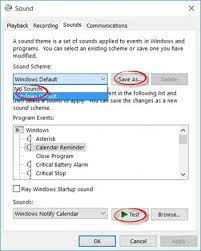
Introduction:
In the bustling digital landscape of Windows, notifications and system sounds often serve as a double-edged sword. While they keep us informed and engaged, the constant symphony of pings and dings can become overwhelming, disrupting our focus and tranquility. This comprehensive guide aims to empower users to reclaim control over their auditory environment by providing step-by-step instructions, settings exploration, and advanced techniques on how to turn off notification and system sounds in Windows. As you embark on this journey, silence becomes the canvas upon which productivity and serenity converge.
Understanding the Impact of Sounds:
- Productivity Disruption: Constant notification sounds can disrupt workflow and concentration, hindering productivity and focus during crucial tasks.
- User Experience Enhancement: While system sounds can enhance the user experience by providing feedback and alerts, there are instances where users prefer a quieter, distraction-free environment.
Navigating the Sounds Settings: A Step-by-Step Guide:
- Access Windows Settings: Open the Windows Settings by clicking on the Start Menu and selecting the gear-shaped Settings icon. Alternatively, press
Windows key + Ito access Settings directly. - Navigate to System: Within the Settings window, navigate to the “System” section. Here, you’ll find various customization options for your Windows system.
- Select Sound Settings: In the System menu, click on “Sound” from the left-hand sidebar. This opens the Sound settings, where you can customize various audio-related options.
- Adjust System Sounds: Scroll down to the “Advanced sound options” section. Here, you can individually adjust the volume of system sounds such as notifications, alarms, and other alerts. Adjust the sliders according to your preference.
- Control App Volume and Device Preferences: To manage app-specific sounds, click on “App volume and device preferences.” Here, you can set the volume for each app individually. Adjusting the app’s volume to zero effectively mutes its sounds.
Silencing Notifications:
- Manage Notification Settings: In the Sound settings, click on “Manage sound devices” to access device-specific sound settings. Disable the “Play a sound when a notification arrives” option to silence notification sounds.
- Customize Notification Sounds: Customize notification sounds for individual apps by going to “Settings” > “System” > “Notifications & actions.” Under “Get notifications from these senders,” select an app and toggle off the “Play a sound” option.
Advanced Techniques for Sound Control:
- Registry Editor Tweaks: For advanced users, the Registry Editor provides granular control over system sounds. Navigate to
HKEY_CURRENT_USER\AppEvents\Schemes\Apps\.Defaultto modify sound settings for default Windows events. - Third-Party Sound Management Tools: Consider using third-party tools like “EarTrumpet” or “Volume2” for more advanced sound management. These tools provide additional features, such as per-app volume control and hotkey-based volume adjustments.
Common Challenges and Solutions:
- Inconsistent Sound Settings: Some apps have their own sound settings, which may override system settings. Ensure that you check and adjust the sound settings within individual apps for a consistent experience.
- Windows Updates Resetting Settings: Windows updates may reset sound settings to default. After major updates, revisit the sound settings to ensure your preferences are maintained.
Practical Applications and Benefits:
- Enhanced Focus and Productivity: Turning off notification and system sounds creates a quieter, less distracting environment, promoting enhanced focus and productivity during work or leisure activities.
- Stress Reduction: A silent digital environment can contribute to stress reduction, providing a peaceful space free from the constant barrage of notifications and alerts.
- Customized User Experience: Tailoring sound settings allows users to personalize their Windows experience, creating an environment that aligns with their preferences and promotes a sense of calm.
Conclusion:
In the realm of Windows customization, mastering the art of turning off notification and system sounds is a powerful step towards crafting a serene digital sanctuary. As you navigate the settings, explore advanced techniques, and embrace the silence, you reclaim control over your auditory experience. The symphony of productivity and tranquility harmonizes in the absence of constant pings, and the canvas of your digital environment becomes a haven for focused, stress-free computing. So, venture into the realm of sound settings, tailor your auditory landscape, and let the quietude become the soundtrack to your digital journey.